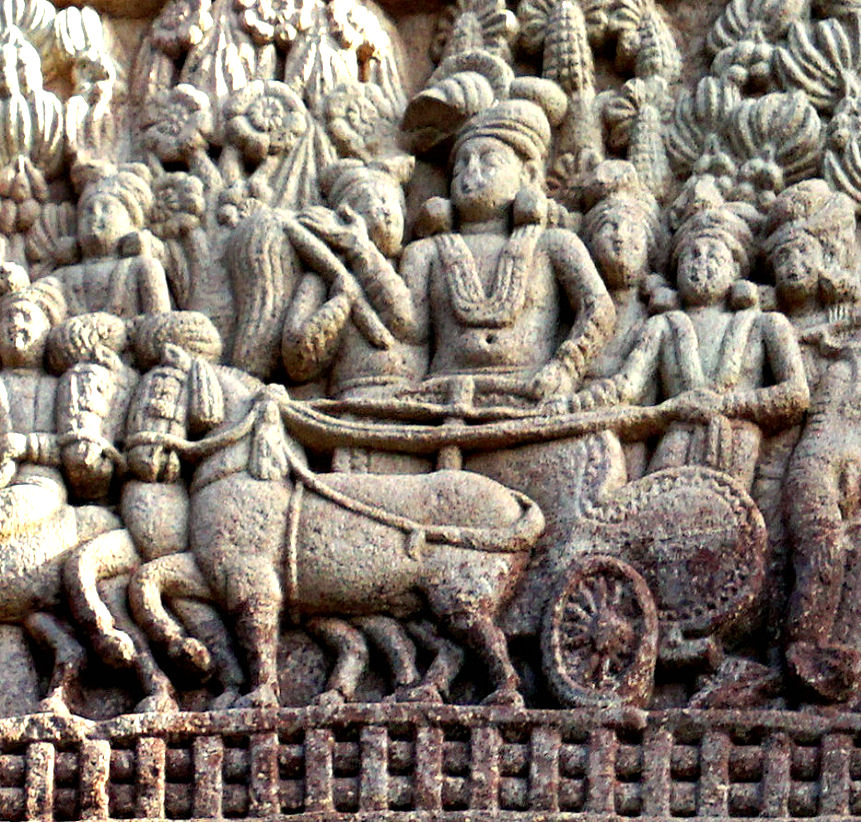
The mighty Mauryan Emperor Ashoka was on a mission to find the sacred relics of Buddha. After much searching, he found a stupa beneath which one of the eight sets of relics was said to be buried. Ashoka found the relics, but was not prepared for what was guarding them: robot warriors.
There are old Hindu and Buddhist texts that describe fearsome robot warriors ‘whirling like the wind, slashing intruders with swords’, but our tale goes much further back. This story takes place thousands of years ago, where a young man in Pataliputra heard stories of the robot-makers of the Roma-visaya (the Indian name for the Greco-Roman culture of the Mediterranean world). The engineers of Roma-visaya made all manner of robots, which were used for commerce, agriculture and even execution.
But the Roma-visaya engineers guarded their robot-making secrets very closely – if one of them ever tried to leave their land carrying any of their designs, they would be killed by a flying robot assassin.
The young man in Pataliputra longed to know the secrets behind these magical feats of engineering so badly that he arranged his own death, vowing to be reborn in Roma-visaya – and indeed he was. Once reborn, the young man became an engineer himself, even marrying the daughter of the Master robot-maker and having a son. In his rebirth, the young man had managed to bring his dream of learning how to build robots to life.
But this was not enough. He wanted to share his knowledge with the people of Pataliputra. However, he knew that the minute he tried to leave with the designs he would be struck down by a robot assassin. So he devised a plan – cutting a deep gash in his thigh, the engineer hid the plans in his flesh and stitched the wound back up. He then told his son of his plan of escape, telling him to take his body back to Pataliputra once the assassins killed him. Once there, the son was to find the engineer’s family from his previous life, and begin making a living creating robots.
The engineer’s plan soon came life, starting with his death. As predicted, he had not travelled far from the Roma-visaya before he was set upon by a deadly robot assassin, which promptly executed him. The engineer’s son was heart-broken, but stuck to the plan and brought his father’s body back to Pataliputra, where he found his old family and retrieved the stolen designs hidden in his father’s flesh.
And so, Pataliputra now had a robot engineer of its own.
Soon, word of the engineer’s son reached Ajatashatru, king of Magadha. The Raja commissioned the engineer’s son to build him an army of robot warriors, who would guard Buddha’s relics that would be buried beneath a stupa. The king wanted robots in particular because they could not be corrupted by greed.
The engineer’s son made these robot warriors for the king, and they were placed as guardians to the precious relics of Buddha, which remained undisturbed – until two centuries later, with the arrival of Ashoka.
The robot guardians were formidable, performing their task with unbeatable skill and strength. Try as he might, Ashoka alone could not defeat them. So he implored the engineer’s son – who was miraculously still alive – to help him disable his creations. After receiving a hefty sum of money, the engineer’s son agreed, and Ashoka emerged victorious, the new possessor of Buddha’s relics.
The engineer’s son, however, was not as lucky. Word of Ashoka’s victory over the warrior robots spread far and wide, eventually reaching the Roma-visaya, who immediately sent a robot assassin hidden in an ornate gift box to the engineer’s son. When he opened the box, the robot sprang out and killed him instantly.
Thus ends the tale of Ashoka and the warrior robots – and although it may seem far-fetched, the truth is that stories of robots date back as early as 2,500 years ago, with Greek mythology exploring the idea of automatons and self-moving machines. In fact, in the 3rd century BC, the Egyptians were already building real mechanical robots.
In reality, Ashoka was known to have corresponded with Ptolemy II, with each king sending ambassadors to the other’s country. Many of India’s ancient tales contain Greek influences – Ashoka even erected pillars that were inscribed in Greek.
The story we just explored would have probably been the result of this cultural exchange in which the real and fantastical blended seamlessly into a fascinating tale of ancient Indian kings, relics of Buddha and warrior robots.
Works Cited
Mayor, Adrienne. “In an ancient Indian legend, robots guarded Buddha’s relics” Scroll. March 16th, 2019. Web. < https://scroll.in/article/916490/in-an-ancient-indian-legend-robots-guarded-buddhas-relics > as seen on May 10th, 2022.
Lebling, Robert W. “Robots of Ages Past” AramcoWorld. November/December, 2019. Web. < https://www.aramcoworld.com/Articles/November-2019/Robots-of-Ages-Past > as seen on May 10th, 2022.
Bhairav, Furcifer J. and Rakesh Khanna. Ghosts, Monsters and Demons of India. Chennai: Blaft Publications. 2020. Print.

Just an amazing piece.
Thank you so much!
Awesome. Loved reading something really new from history. Subscription not wasted.